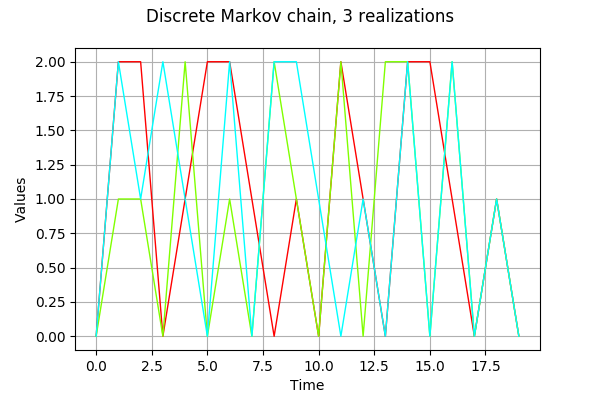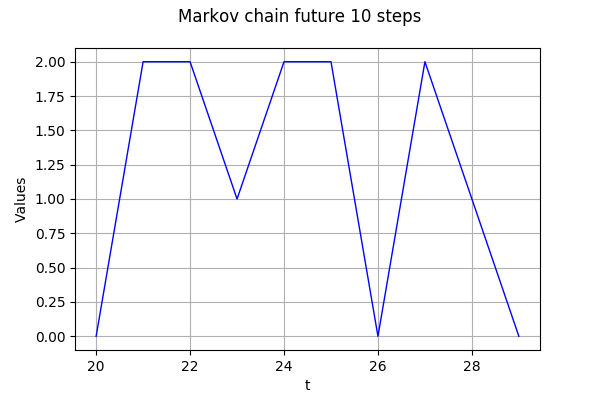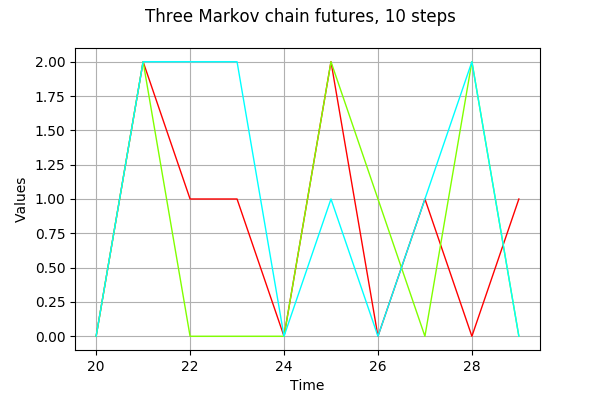Create a discrete Markov chain process¶
This example details first how to create and manipulate a discrete Markov chain.
A discrete Markov chain , where
is a process where
discretized on the time grid
such that:
The transition matrix of the process can be defined such that:
The library proposes to model it through the object DiscreteMarkovChain defined thanks to the origin (which can be either deterministic or uncertain), the transition matrix
and the time grid.
[1]:
from __future__ import print_function
import openturns as ot
[2]:
# Define the origin
origin = ot.Dirac(0.0)
[3]:
# Define the transition matrix
transition = ot.SquareMatrix([[0.1, 0.3, 0.6], [0.7, 0.1, 0.2], [0.5, 0.3, 0.2]])
[4]:
# Define an 1-d mesh
tgrid = ot.RegularGrid(0.0, 1.0, 50)
[5]:
# Markov chain definition and realization
process = ot.DiscreteMarkovChain(origin, transition, tgrid)
real = process.getRealization()
graph = real.drawMarginal(0)
graph.setTitle('Discrete Markov chain')
graph
[5]:

[6]:
# Get several realizations
process.setTimeGrid(ot.RegularGrid(0.0,1.0,20))
reals = process.getSample(3)
graph = reals.drawMarginal(0)
graph.setTitle('Discrete Markov chain, 3 realizations')
graph
[6]:

[7]:
# Markov chain future 10 steps
future = process.getFuture(10)
graph = future.drawMarginal(0)
graph.setTitle('Markov chain future 10 steps')
graph
[7]:

[8]:
# Markov chain 3 different futures
futures = process.getFuture(10,3)
graph = futures.drawMarginal(0)
graph.setTitle('Three Markov chain futures, 10 steps')
graph
[8]:

 OpenTURNS
OpenTURNS